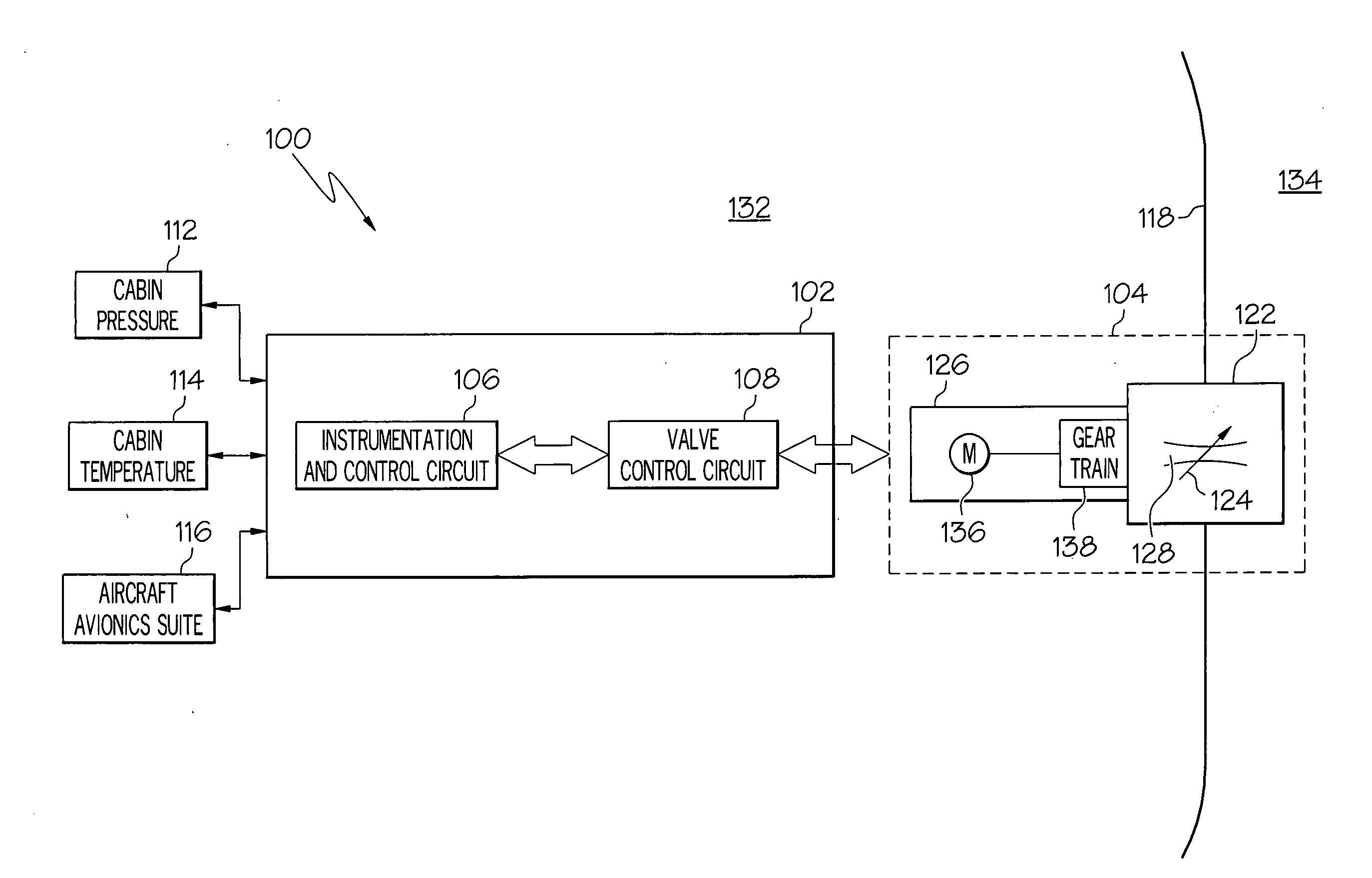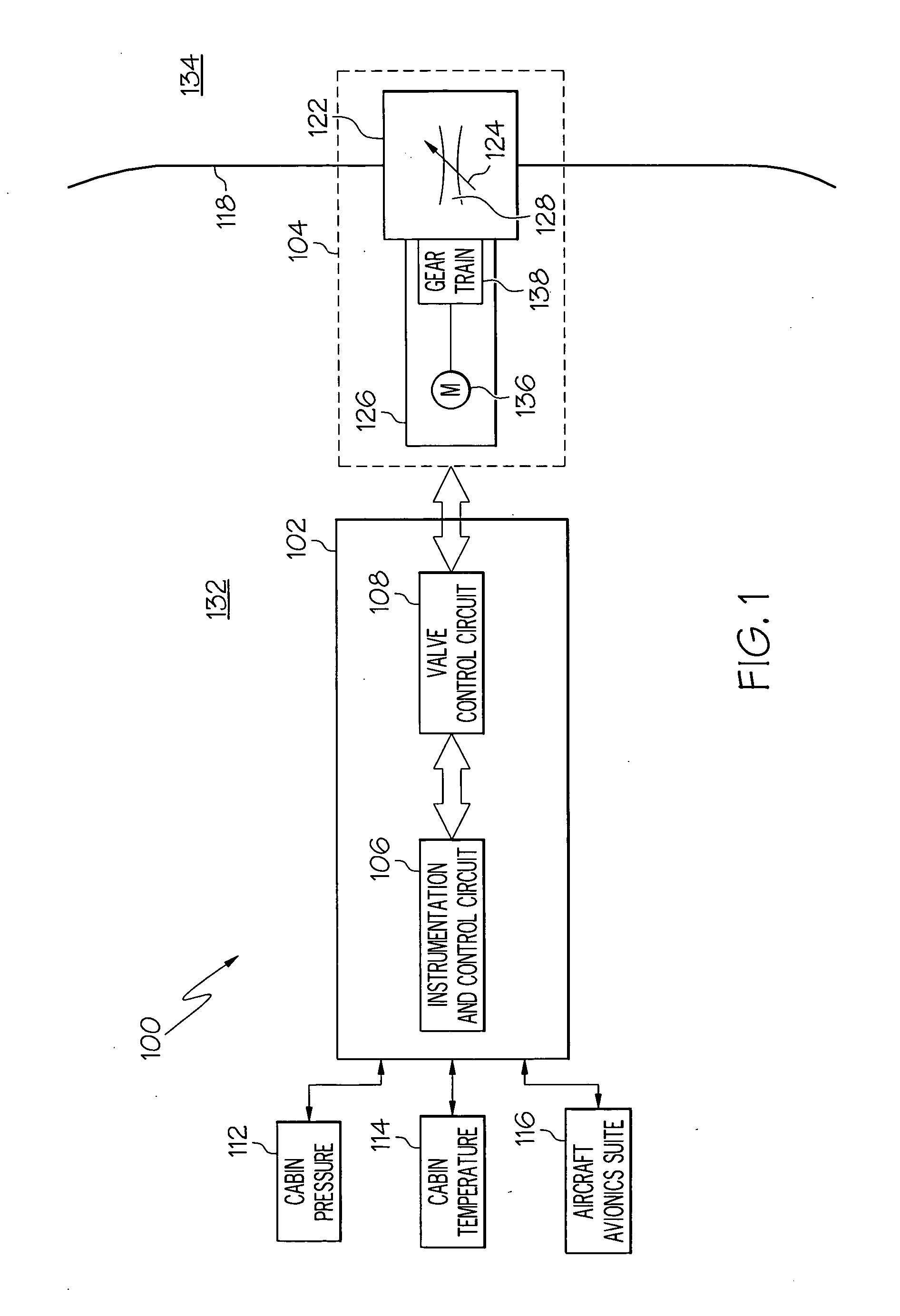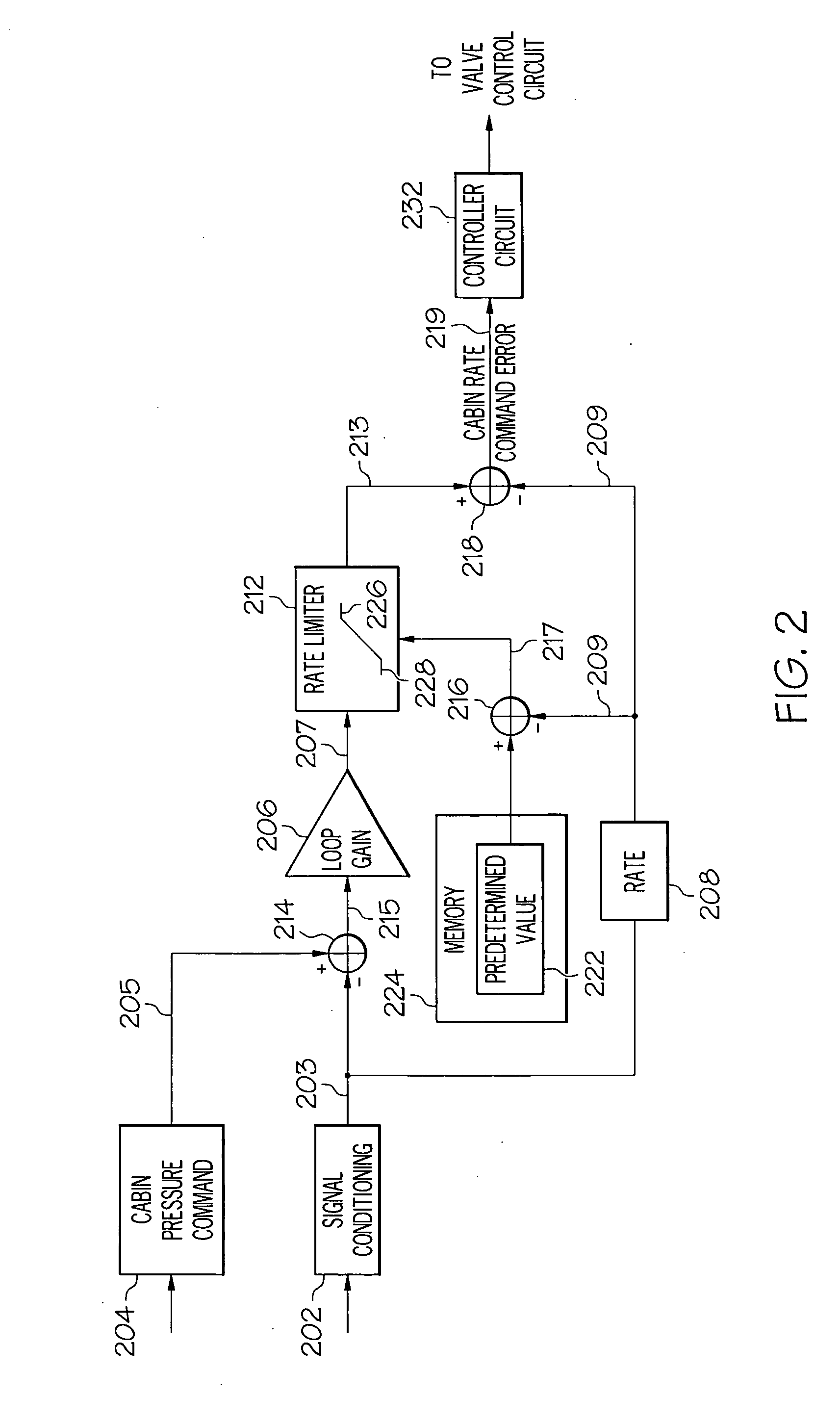Aircraft cabin pressure control system and method that improves cabin pressurization during take-off
a cabin pressure control and cabin technology, applied in the direction of fuselages, energy-efficient board measures, aircraft accessories, etc., can solve the problems of aircraft passengers suffering hypoxia, aircraft cabin pressure drop, etc., to achieve fast and consistent pressure in the cabin, and reduce the effect of air pollution
- Summary
- Abstract
- Description
- Claims
- Application Information
AI Technical Summary
Benefits of technology
Problems solved by technology
Method used
Image
Examples
Embodiment Construction
[0019] Before proceeding with the description, it is to be appreciated that the following detailed description is merely exemplary in nature and is not intended to limit the invention or the application and uses of the invention. Furthermore, there is no intention to be bound by any theory presented in the preceding background or the following detailed description.
[0020] Turning now to FIG. 1, a functional block diagram of an exemplary aircraft cabin pressure control system 100, and its interconnections to certain other aircraft systems, is shown. In the depicted embodiment, the system 100 includes a control unit 102 and an outflow valve 104. Although not depicted, it will be appreciated that the system 100 may additionally include one or more overpressure relief valves, and one or more negative pressure relief valves. These valves are typically included as part of an aircraft cabin pressure control system but, for clarity and ease of illustration and depiction, are not shown or fu...
PUM
 Login to View More
Login to View More Abstract
Description
Claims
Application Information
 Login to View More
Login to View More - R&D
- Intellectual Property
- Life Sciences
- Materials
- Tech Scout
- Unparalleled Data Quality
- Higher Quality Content
- 60% Fewer Hallucinations
Browse by: Latest US Patents, China's latest patents, Technical Efficacy Thesaurus, Application Domain, Technology Topic, Popular Technical Reports.
© 2025 PatSnap. All rights reserved.Legal|Privacy policy|Modern Slavery Act Transparency Statement|Sitemap|About US| Contact US: help@patsnap.com



